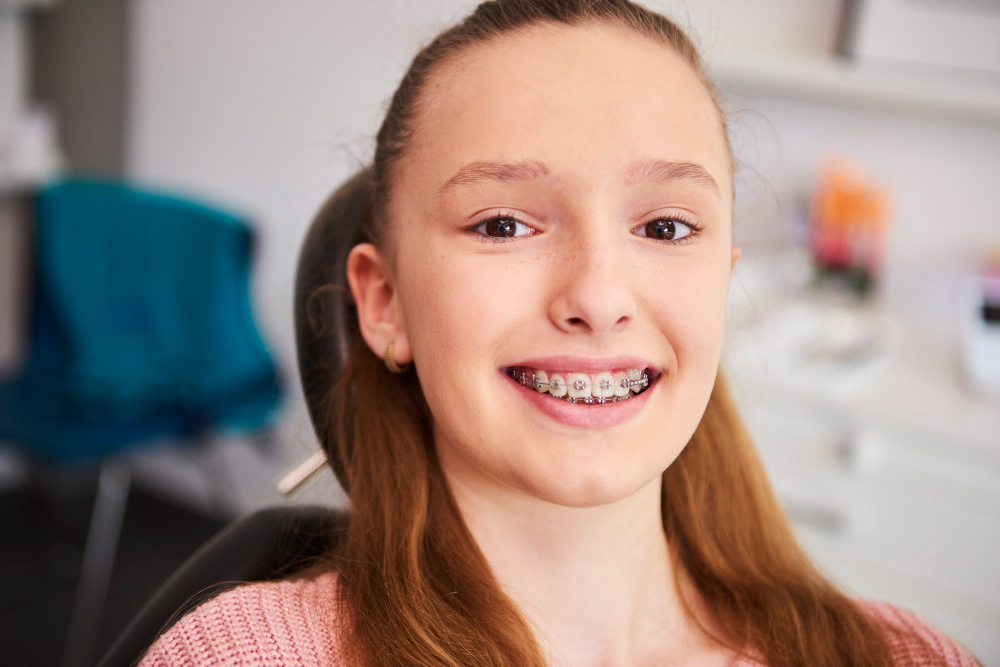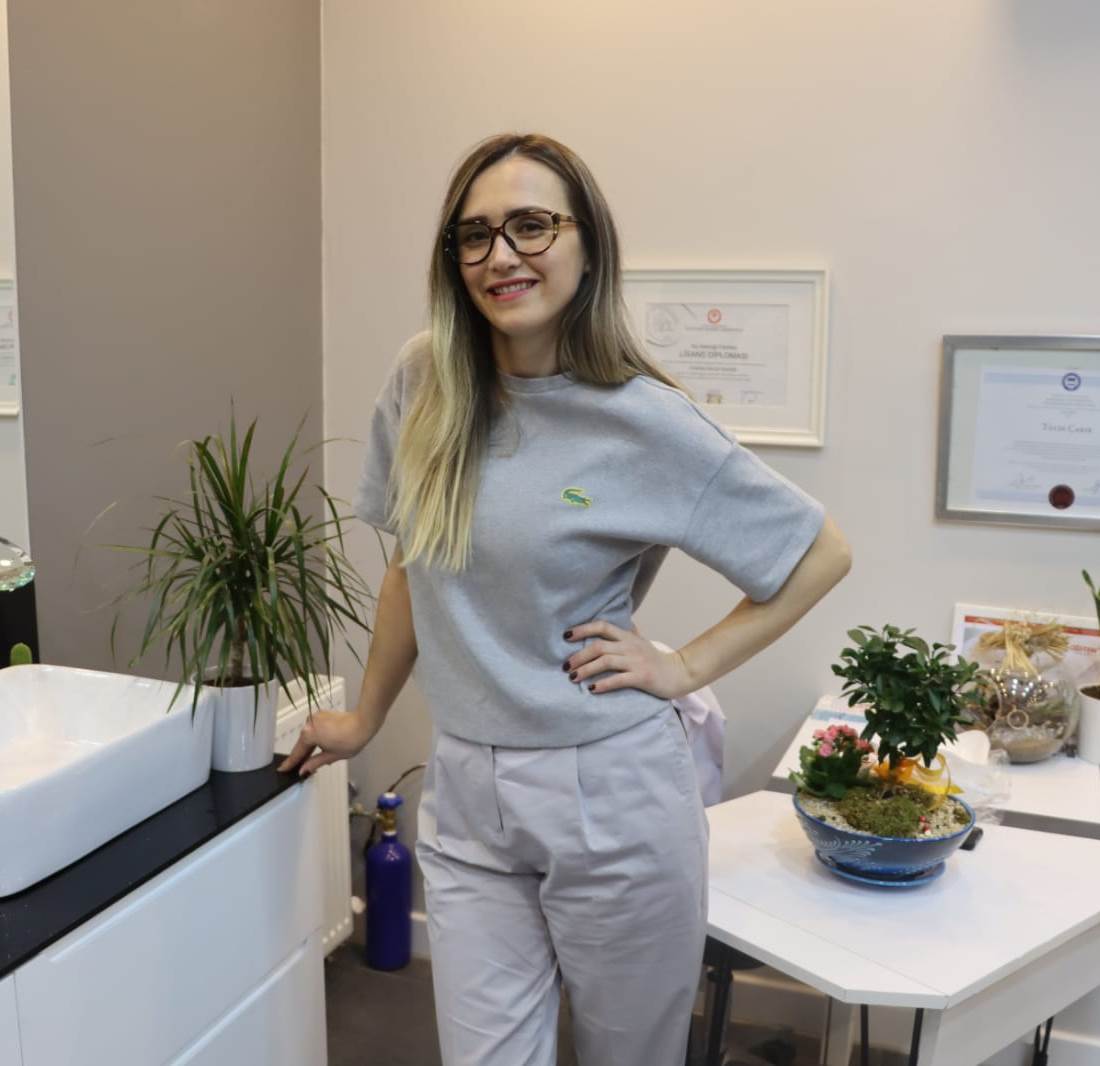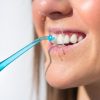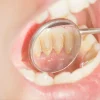Get information about Orthodontic Treatment for Children with the explanation of specialist dentist Merve Özkan Akagündüz.
Orthodontics for Children

Orthodontics for Children, Doredent İstanbul
Dental problems can be solved at any age with orthodontic treatments, but the solution of orthopedic problems is only possible with appliances at an early age or surgery at an older age. With very simple interventions at an early age, major problems that may become necessary in the future can be prevented.
You may not see any problems with your child’s teeth, or you may believe that the problems will resolve themselves as they grow. However, the situation may be very different from what you think. Your child may have problems that you are not aware of but that an orthodontist can understand. Additionally, unfortunately, a problem you notice in your child usually does not improve due to growth, and may even get worse. For this reason, children should have an orthodontic examination every year starting from the age of 7.
Negative behaviors such as mouth breathing, finger-lip sucking, and continuation of baby swallowing are among the situations that must be seen by an orthodontist. It is important not to postpone the orthodontic examination in cases such as early loss of primary teeth due to caries, crowding of the newly erupted permanent front teeth, protruding appearance of the upper front teeth, positioning of the lower teeth in front of the upper teeth, and asymmetrical tooth closure.
Orthodontic treatments performed at an early age have many advantages. First of all, with interventions, permanent teeth can be ensured to emerge healthy and smooth. Many orthodontic problems can be prevented. Growth development can be achieved in the correct positions of the jaws relative to the skull base. Being under constant control ensures that the importance of teeth is prioritized and thus oral care can be improved and caries formation can be prevented. As physical appearance will improve with orthodontic treatments, children’s self-confidence increases. In addition, with orthodontic treatments, the child gets used to the dentist and his practices and dental phobia is not observed.
Early diagnosis of orthodontic problems in children is important. For example; In case of narrowness of the lower jaw, lower jaw expansion should usually be done by the age of 10 at the latest. Because after the lower canine teeth emerge, enlargement of the lower jaw is only possible through surgical methods. Another example; These are cases where the upper jaw is positioned backwards. Once a certain age is reached, the effect of the treatment mechanics is limited or no contribution can be made.
While treatment of skeletal problems may be possible at an early age, treatment of dental problems may require waiting around the age of 11-13 when all permanent teeth erupt. To get answers to these questions, it would be beneficial for you to be examined by your orthodontist.
Removable Appliances
Removable appliances are orthodontic devices that can be taken in and out, used during childhood to guide the development of teeth and jaws. They are employed to address narrow jaws, to expand the upper and/or lower jaws, to create space for teeth, to break habits, and to guide jaw development.
The fact that removable appliances can be taken out offers an advantage in terms of oral hygiene. Children can remove their appliance and maintain their regular oral care routines. However, the disadvantage of removable appliances is also related to their removability. If the child does not want to wear the appliance, the treatment may not be successful.
Removable orthodontic appliances are often referred to as “palatal expanders” in the community. One reason for this is that most removable appliances are applied to the upper jaw since the most common problems are usually related to the upper jaw. In particular, upper jaw narrowness is very common. Solving this problem is very simple between the ages of 8-12. With easy-to-use removable appliances that have a screw in the middle, we can achieve good results in a short period of 6-8 months.
Problems Addressed by Removable Appliances
Removable appliances can be used to solve a variety of problems. They are used to treat habits like thumb sucking, to expand the upper and/or lower jaws, to correct jaw misalignments where the jaw is positioned too far forward or backward, to prevent protruding teeth from being damaged, and to regain space lost due to prematurely lost primary teeth.
Types of Removable Appliances
Jaw Expansion Appliances: These can be used for the upper or lower jaw separately or simultaneously. Treatment with a lower jaw expansion appliance must start before the permanent lower canines erupt. Otherwise, even if the lower jaw is slightly expanded, the result is not expected to be permanent. The time for lower jaw expansion is very short, and if a narrowness is detected during a routine orthodontic check-up every 6 months, immediate intervention is necessary. If this period is missed and the narrowness is severe, surgical intervention may be required after the age of 18 to solve the problem.
Monoblock/Twinblock Appliances: These appliances can be used when the lower jaw is underdeveloped or to correct lower jaw asymmetries. The monoblock is a single piece, while the twinblock consists of two pieces for the upper and lower jaw. Both appliances are used to position the lower jaw forward to guide its growth and development.
Hawley Appliances: Hawley plates are frequently used in children to stop thumb sucking habits, correct improper swallowing, or to move individual teeth. They are typically used during the mixed dentition period.
Clear Aligners: Clear aligners can also be included in the group of removable appliances. Clear aligner treatments can be used for children as well as adults. It is not necessary for all permanent teeth to have erupted to start treatment. Treatment can begin even during the mixed dentition period.
Essix Retainers: Essix retainers are a type of clear aligner used to maintain the results obtained after orthodontic treatment. Unlike clear aligner treatments, Essix retainers do not move the teeth. They are passive appliances. Using them according to the doctor’s recommendations is crucial for the permanence of the treatment.
How Are Removable Appliances Applied?
Once the decision to use a removable appliance is made, an impression of the patient’s teeth is taken. Both digital and traditional methods can be used for taking impressions. After the appliance is prepared in the laboratory according to the plan, it is fitted in the mouth. The patient is informed about how to use the appliance, the daily usage time, how to clean the appliance, and what to pay attention to. A follow-up appointment is scheduled for the patient.
Usage Duration of Removable Appliances
The usage duration of removable appliances varies depending on the type and severity of the problem, the type of appliance made, the doctor’s opinion, and the child’s cooperation with the appliance. Generally, jaw expansion appliances are used for 6-8 months, monoblock or twinblock appliances for 8-12 months, habit-breaking appliances for approximately 6 months. Essix retainers are typically used for 12-18 months. Clear aligner treatments can take much longer.
Merve Özkan Akagündüz
I was born in Edirne in 1988. In 2007, I began my master’s degree in Dentistry at Istanbul University (Çapa) Faculty of Dentistry and graduated in 2012.
In 2014, I started my specialization in the Department of Orthodontics at Süleyman Demirel University Faculty of Dentistry. In 2019, I earned the title of Orthodontist and was appointed to Çorlu ADSM, where I worked as an Orthodontic Specialist Dentist from 2019 to 2022.
As of 2024, I have been continuing my practice in my own clinic.








